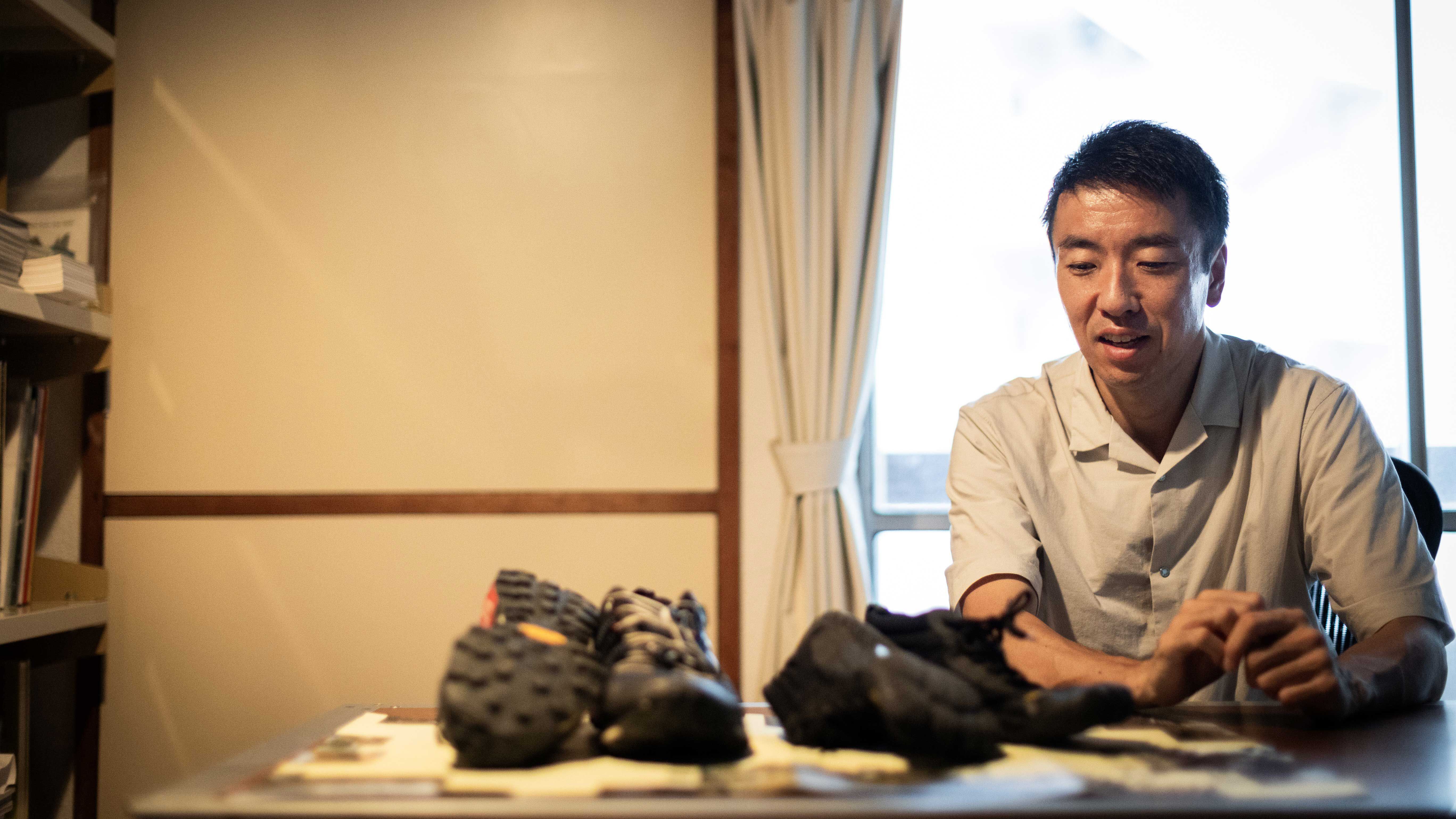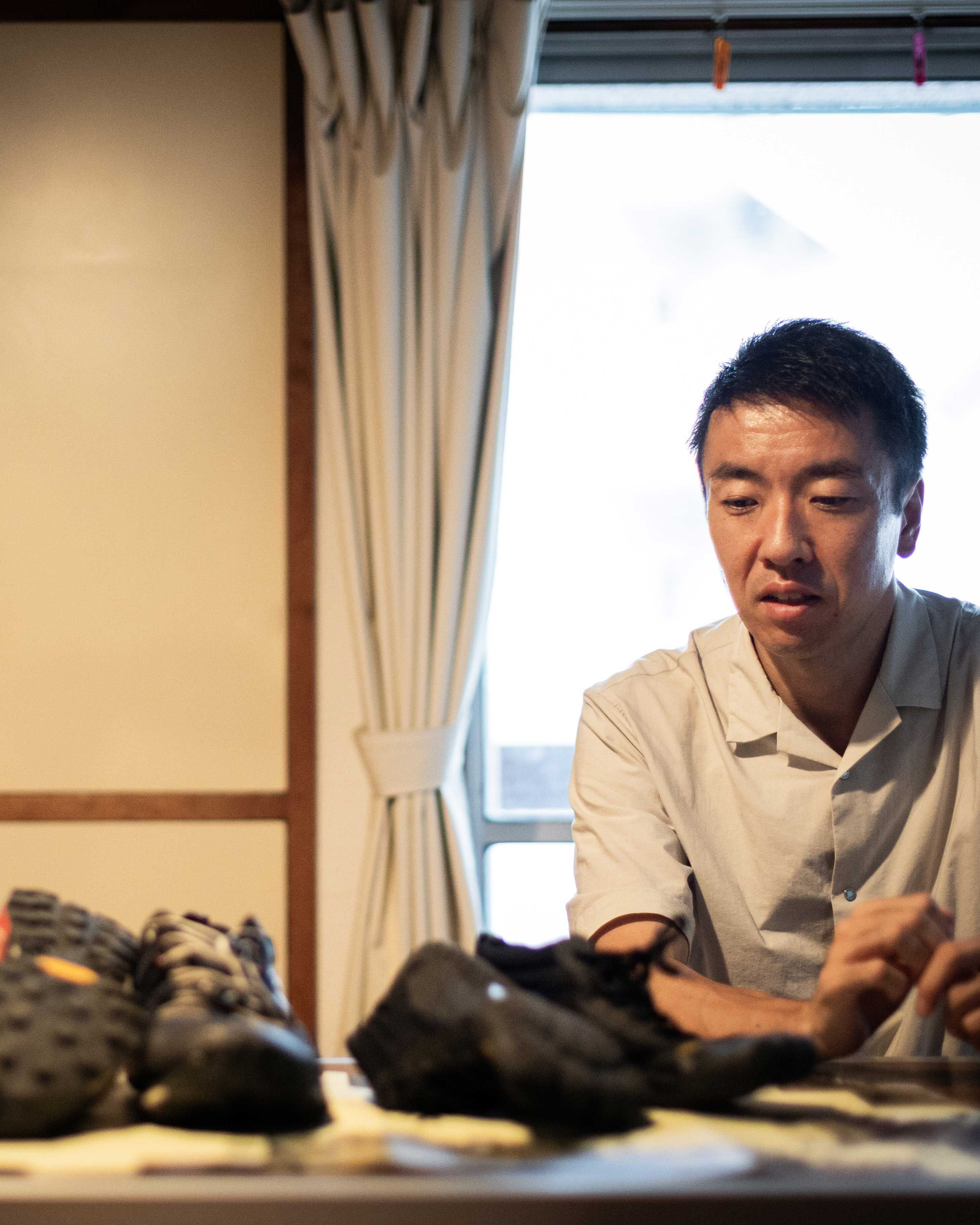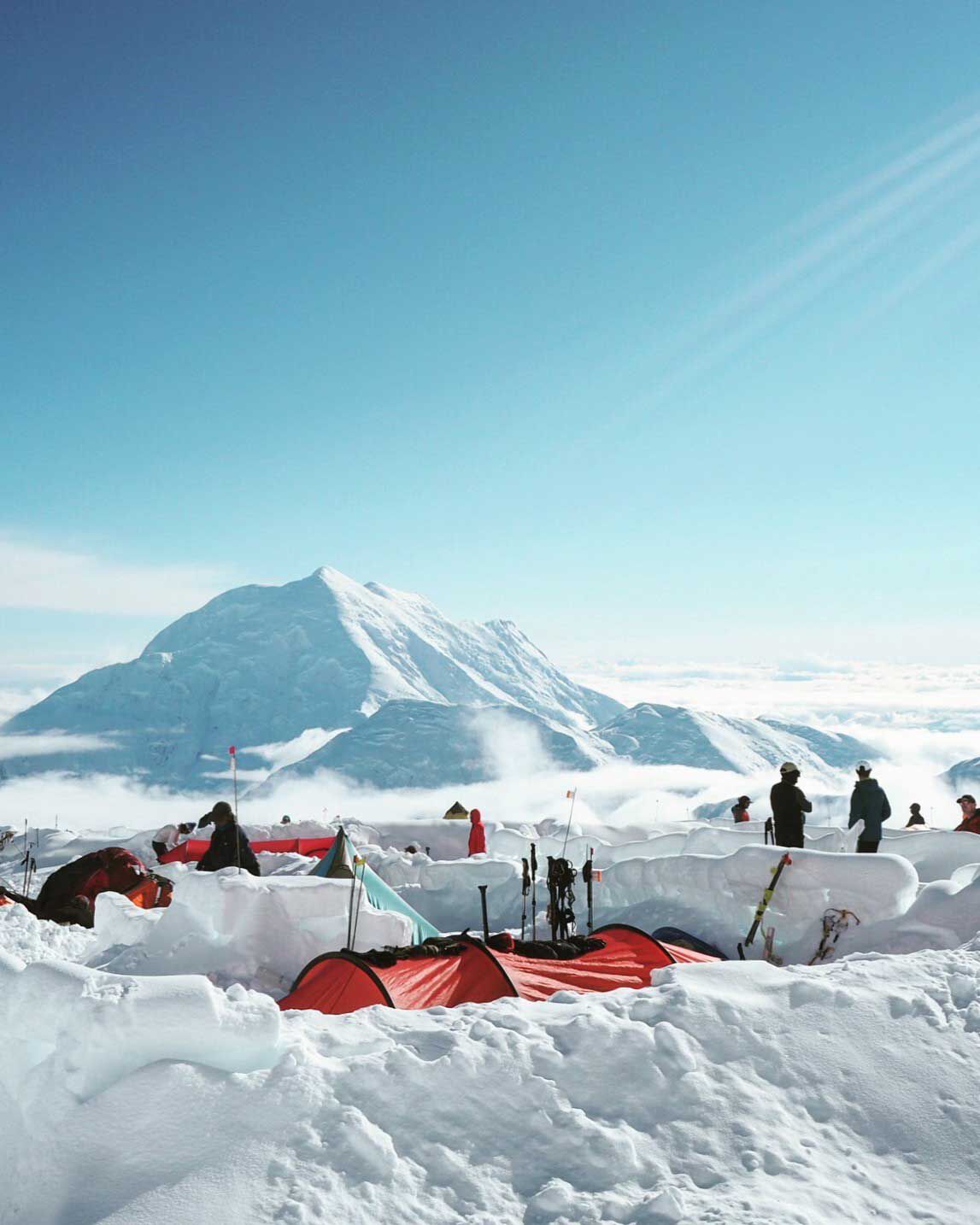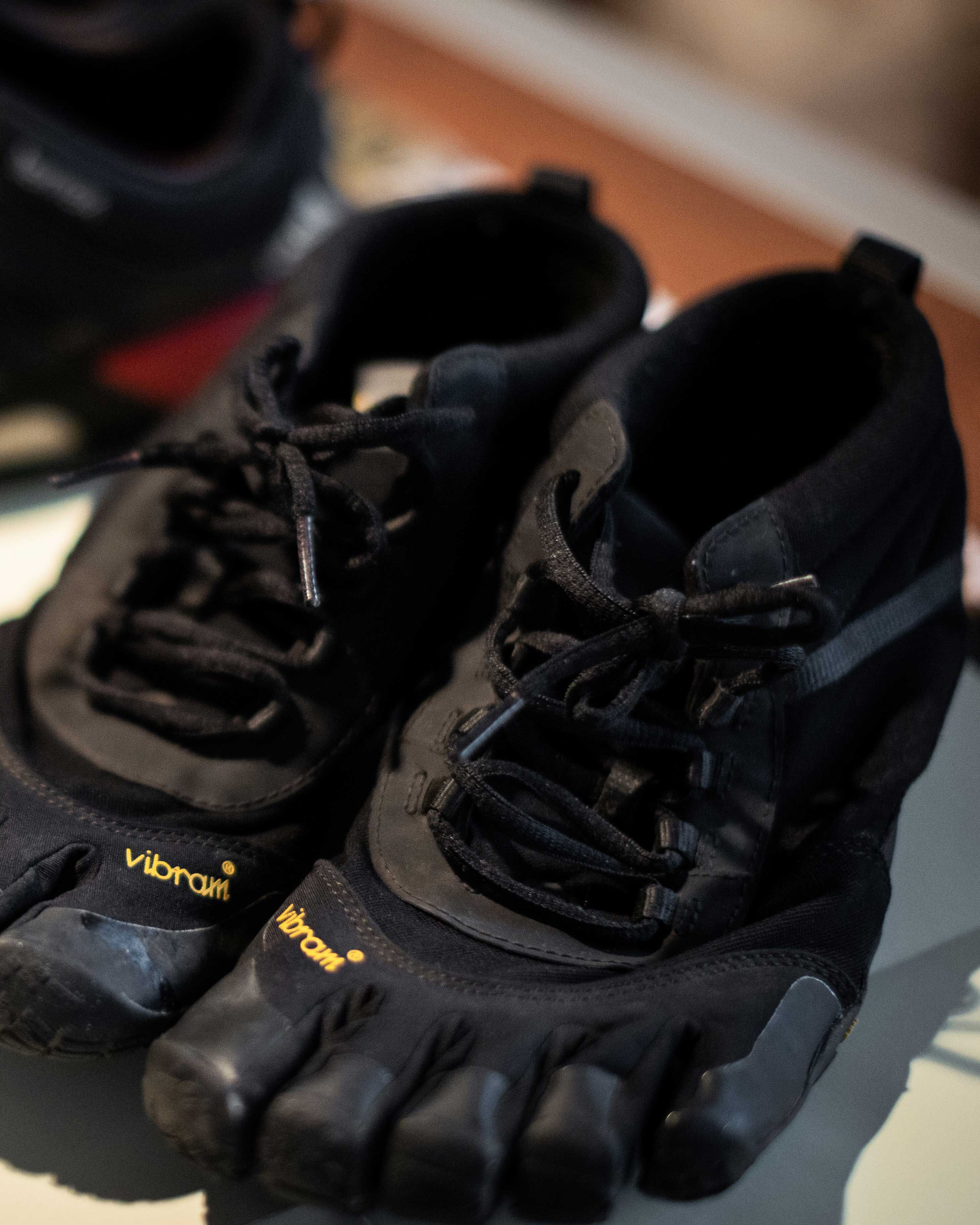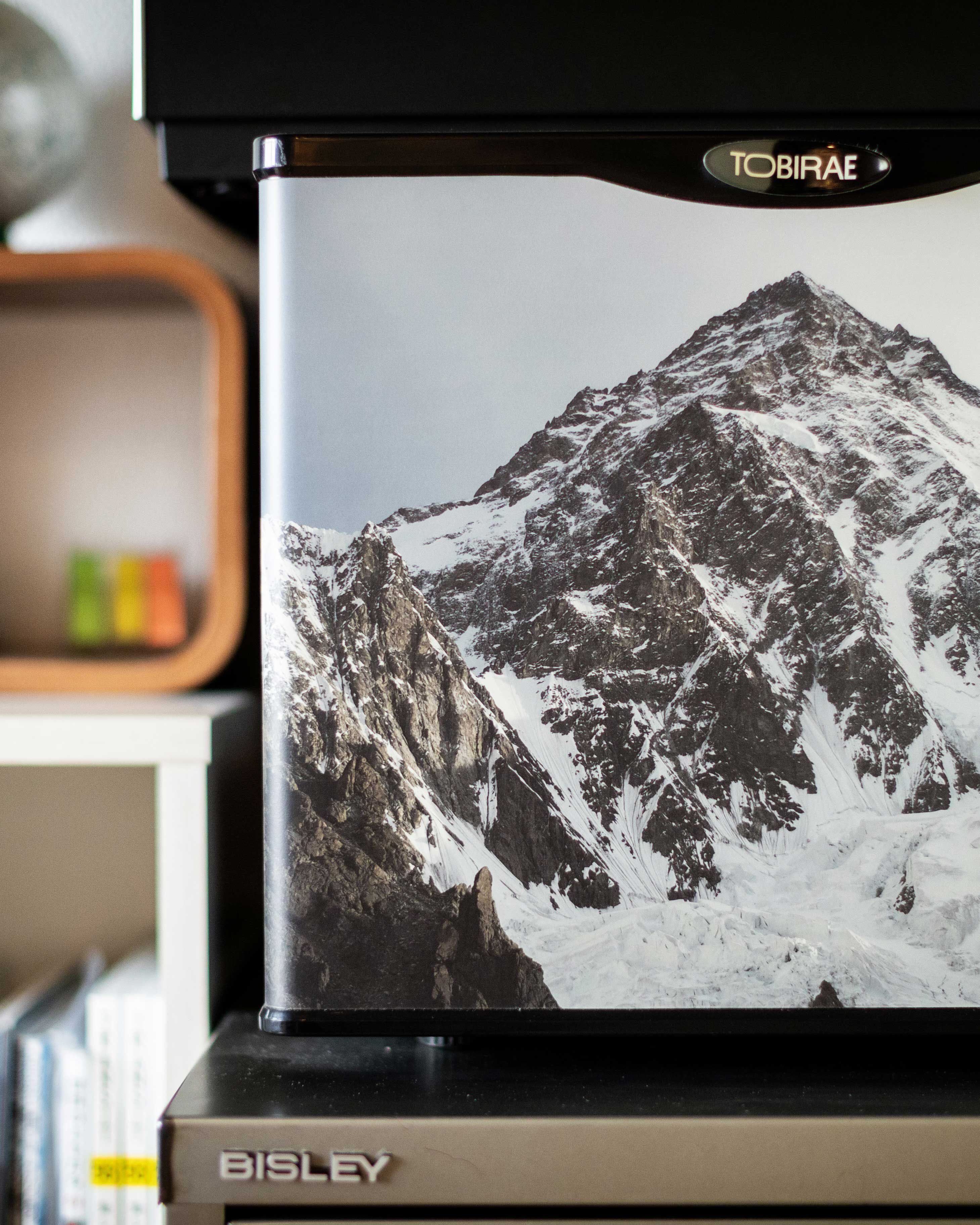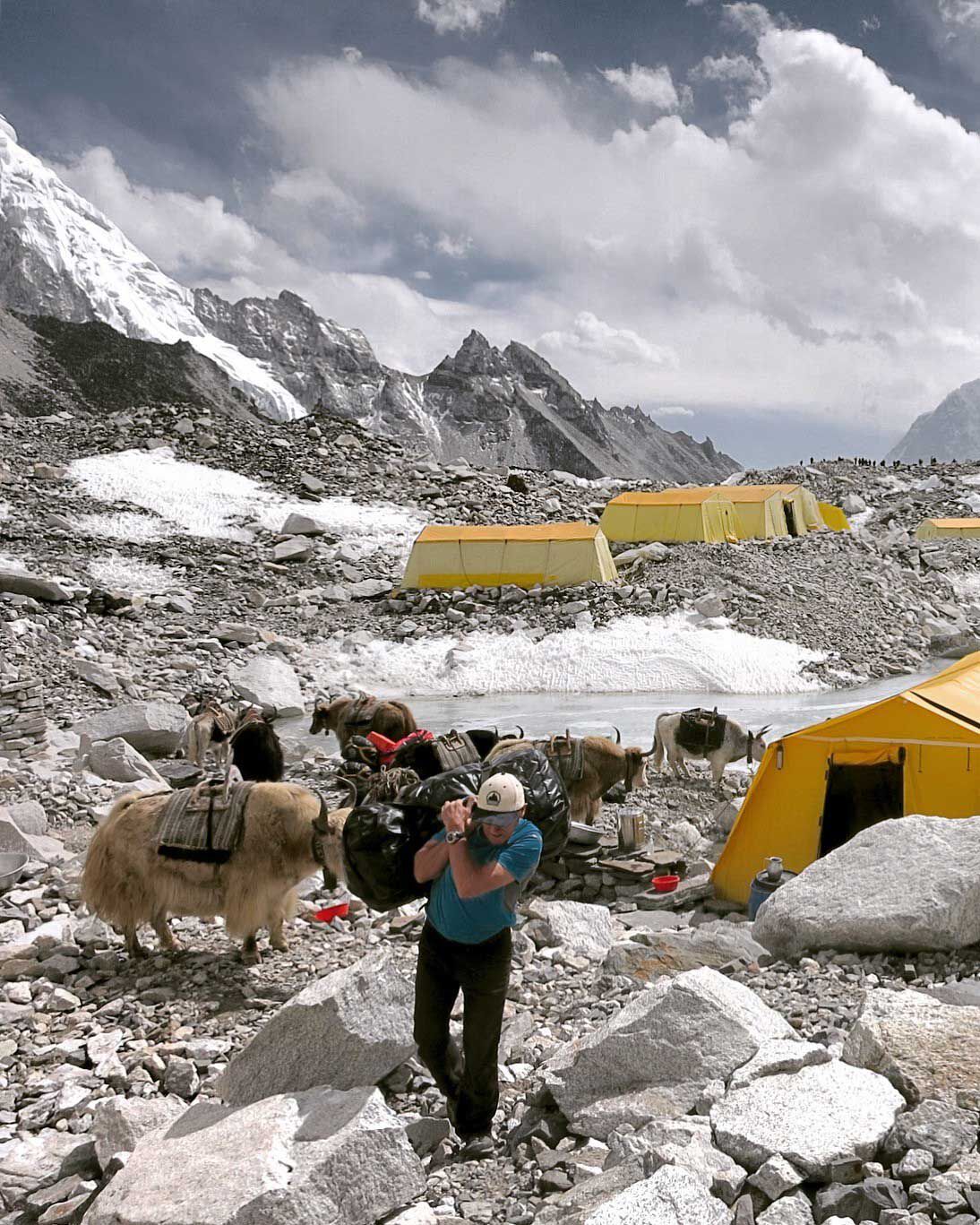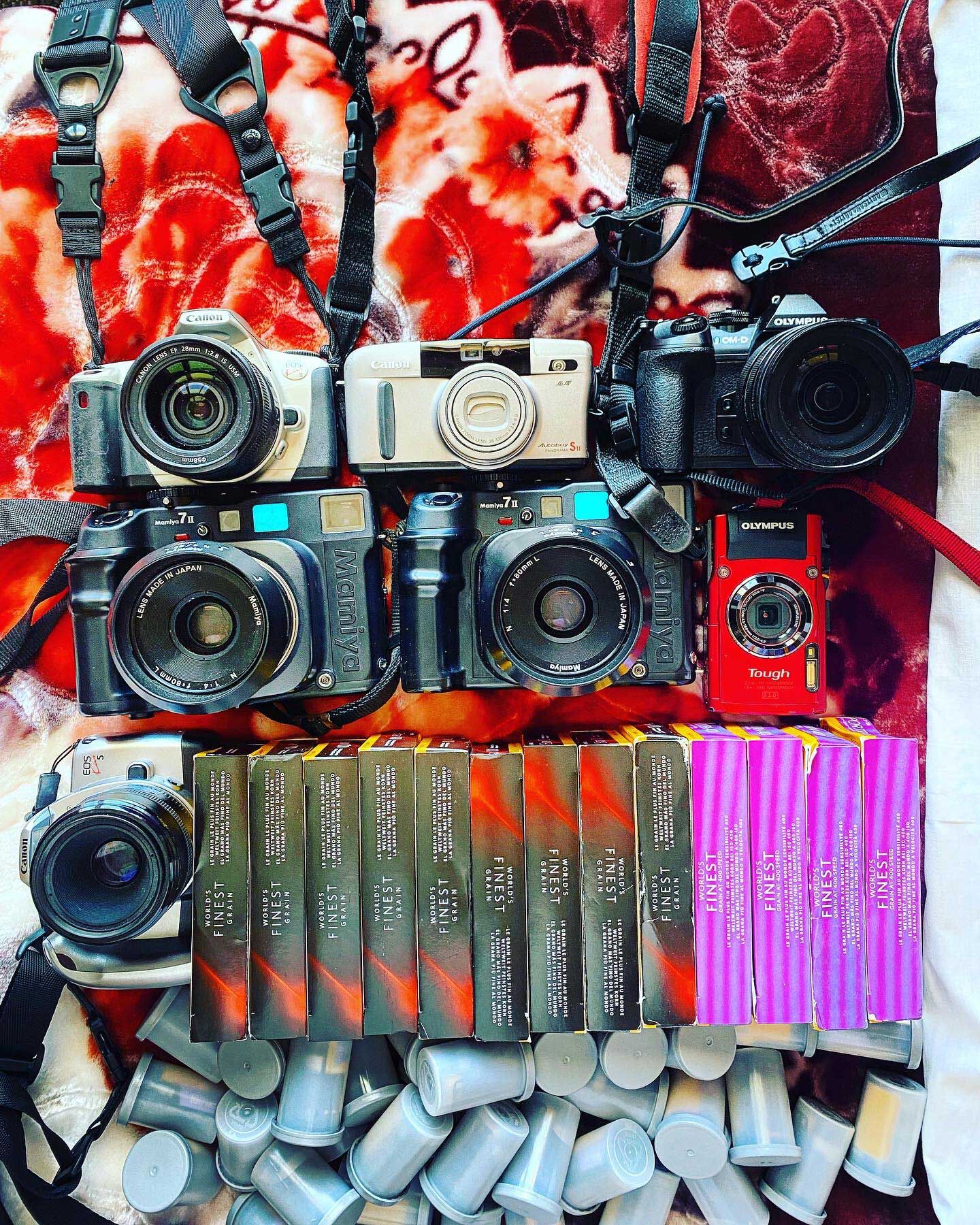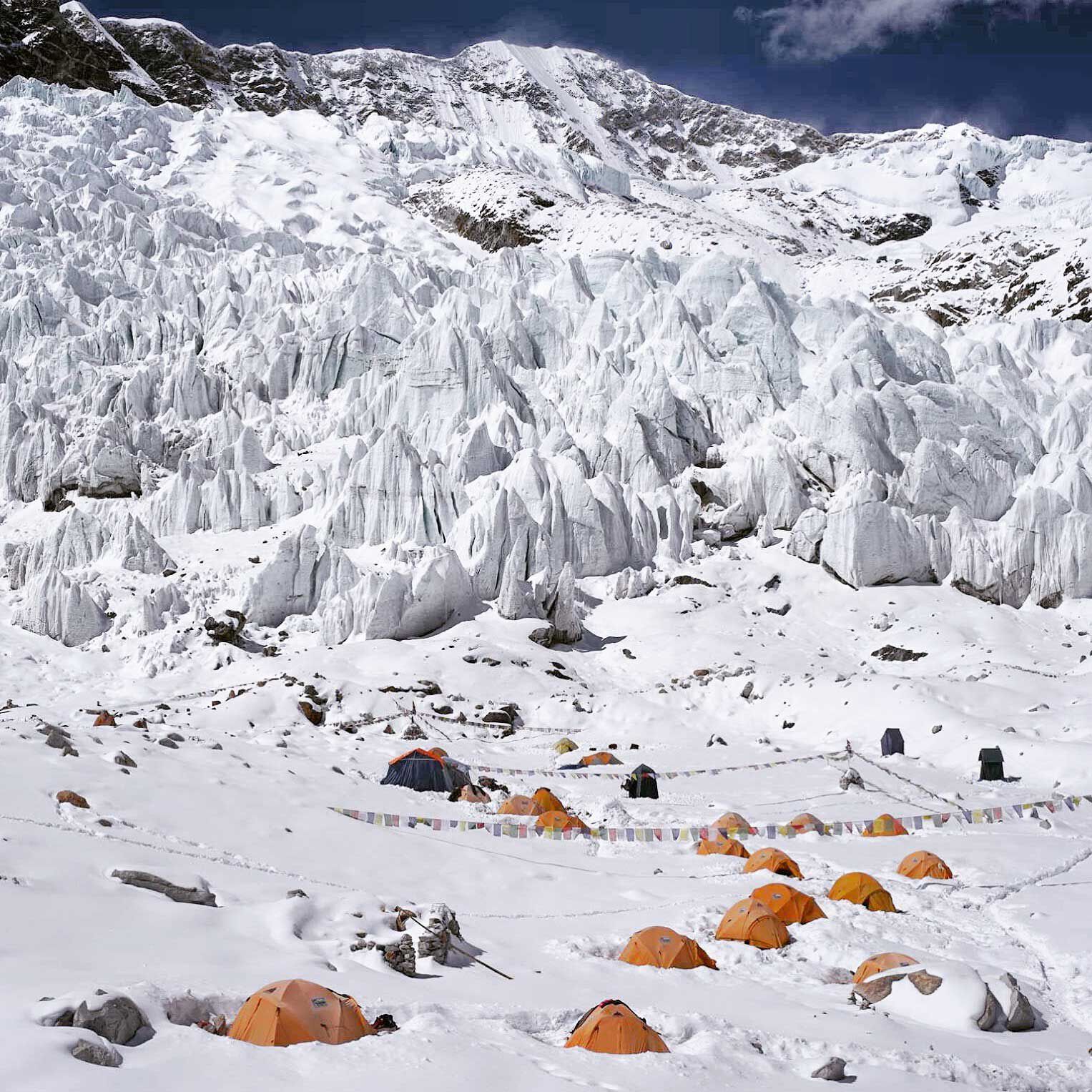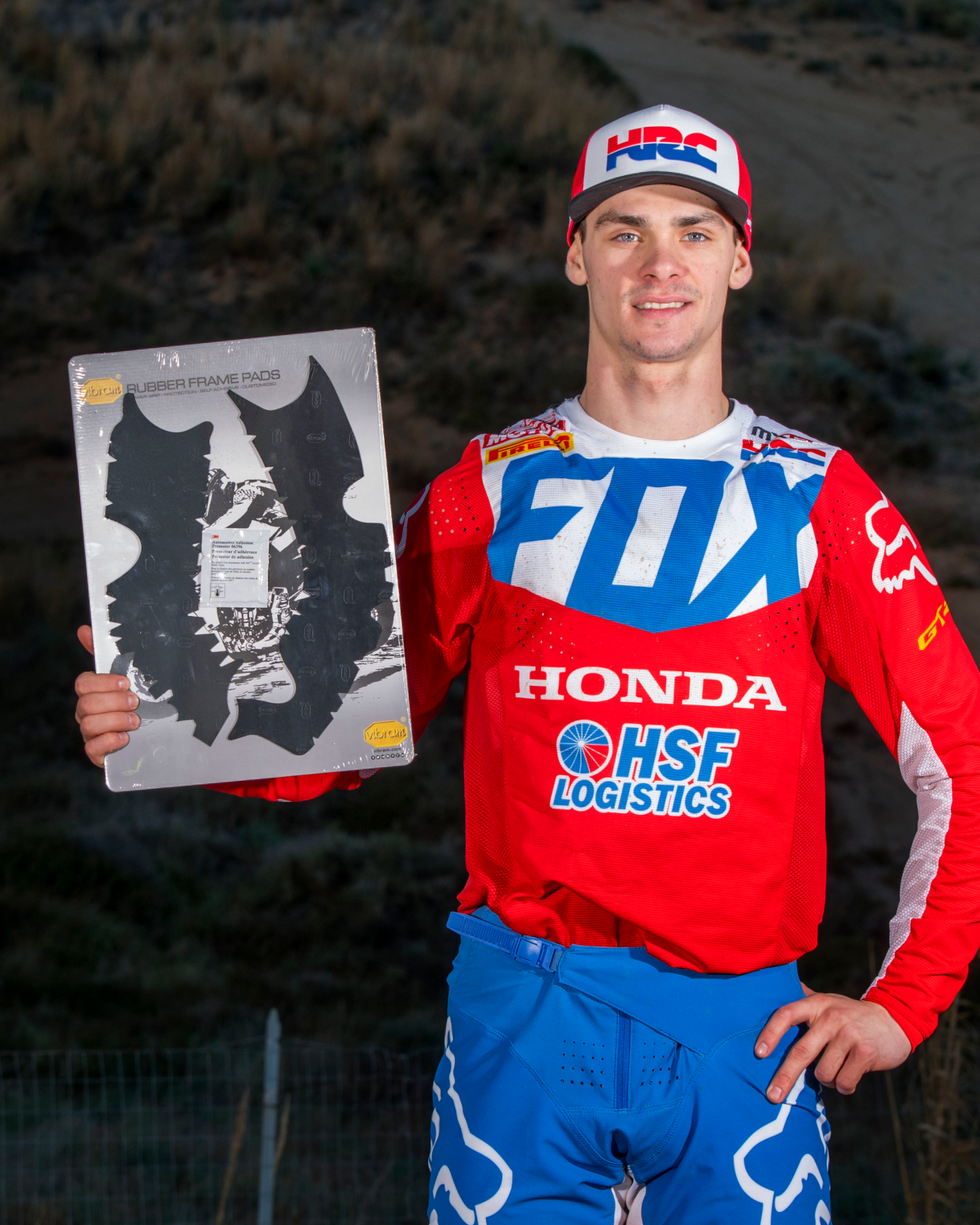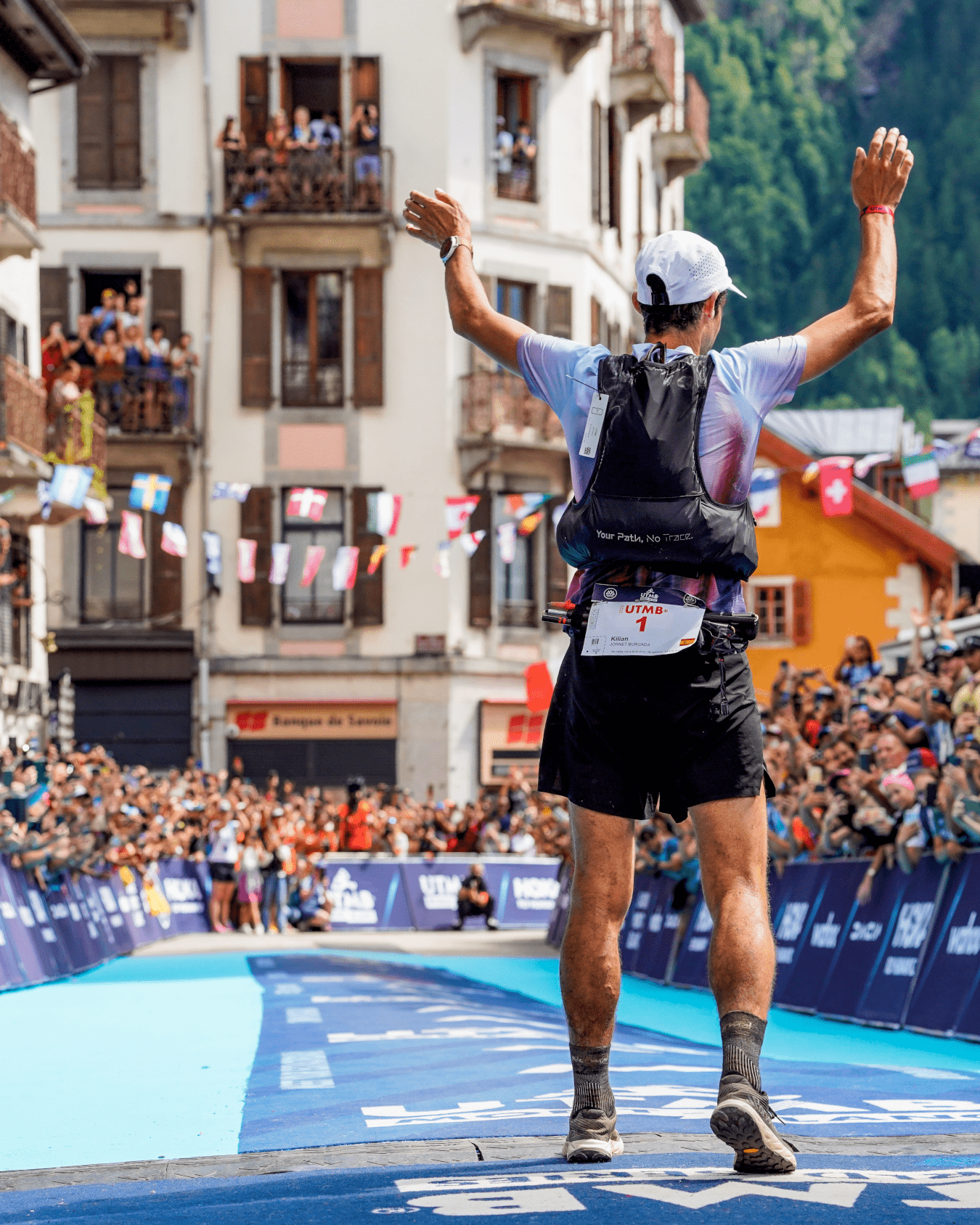Photographer Naoki Ishikawa, who continues to travel around the world from the mountains of the Himalayas to the hustle and bustle of cities, always had shoes equipped with Vibram soles on his feet.
Naoki Ishikawa is a versatile artist in photography and writing. At 23, he became the youngest person to summit the highest peaks on all seven continents. Recently, he’s been tackling the 14 peaks over 8000 meters in the Himalayas, sharing his unique perspective through his works. In this interview, he discusses his journeys and his encounter with Vibram (Interview date: June 2024).
ー How do you perceive yourself, given your diverse activities as a photographer, writer, and adventurer?
Ishikawa: Titles don't hold much meaning for me. I've been documenting what I've seen through my travels in photos and writing, and presenting them in various forms for many years. Traveling and taking photos are inseparably linked for me, and there's no clear boundary between them.
ー When did your passion for travel begin?
Ishikawa: It started when I traveled alone to India and Nepal in my second year of high school. At 17, I realized firsthand that the world is incredibly diverse, with different cultures beyond the sea. Experiencing things like eating with hands, using hands instead of paper in toilets, elephants walking on roads, and bodies floating down the Ganges River was shocking and became the catalyst for my future travels.
ー You climbed Denali at 20 and participated in the "Pole to Pole" project at 22, right?
Ishikawa: Climbing Denali, the highest peak in North America, introduced me to the allure of high-altitude climbing. The ""Pole to Pole"" project involved traveling from the North Pole to the South Pole using human-powered means like bicycles, canoes, and skis. It was a year-long journey with an international team, experiencing gradual environmental changes and learning about communication and living with people from different cultures.
ー Did you encounter Vibram around that time?
Ishikawa: I started wearing ""Danner Light"" boots with Vibram soles in high school. I wore them extensively, even replacing the soles three times. I climbed peaks like Kilimanjaro with these boots, feeling secure because of the Vibram outsoles. I've had a long relationship with Vibram, using their soles in various trekking and mountaineering shoes for 30 years.
ー You climbed Everest at 23, setting the record for the youngest person to summit the highest peaks on seven continents. Why did you aim for the world's highest peaks?
Ishikawa: It's not just because the mountains are there, but because Everest was an unexplored peak. I wanted to experience the feeling of climbing the highest mountain, even though many people climb it now.
ー Were you wearing Vibram soles during your Everest climbs?
Ishikawa: Yes, in 2001, I wore Millet boots, and in 2011, I wore SCARPA trekking and mountaineering shoes, both with Vibram outsoles.
ー How did you experience the ""death zone"" at 8000 meters?
Ishikawa: Although I used oxygen tanks, it was still challenging. It's a place where you need a strong will to survive. The feeling is very different from climbing 6000-meter peaks.
ー How do you capture photos in such harsh conditions?
Ishikawa: I take photos when my body reacts to something. Ideally, I would record everything I see, but that's difficult. I capture moments that make me feel ""wow,"" whether in the Himalayas or Tokyo.
ー What do you want to convey through your work?
Ishikawa: I don't aim to convey anything specific. I present what I've encountered as it is. People can think about the environment, be interested in the cultures and lives of those depicted, or be moved by beautiful landscapes—or feel nothing at all.
ー What sparked your interest in photography?
Ishikawa: I carried a camera during my high school travels to India and Nepal, wanting to record what I saw. Meeting unique and talented photographers like Daido Moriyama was significant.
ー After climbing Everest in 2001, you explored Polynesian islands and prehistoric cave paintings, and published various photo books. But you aimed for Everest again in 2011, correct?
Ishikawa: In 2001, I climbed from the Tibetan side, but I wanted to try the Nepalese route. In 2011, I climbed from the Nepalese side, rediscovering the excitement of Himalayan climbing and challenging other 8000-meter peaks annually since then.
Naoki Ishikawa is a versatile artist in photography and writing. At 23, he became the youngest person to summit the highest peaks on all seven continents. Recently, he’s been tackling the 14 peaks over 8000 meters in the Himalayas, sharing his unique perspective through his works. In this interview, he discusses his journeys and his encounter with Vibram (Interview date: June 2024).
ー How do you perceive yourself, given your diverse activities as a photographer, writer, and adventurer?
Ishikawa: Titles don't hold much meaning for me. I've been documenting what I've seen through my travels in photos and writing, and presenting them in various forms for many years. Traveling and taking photos are inseparably linked for me, and there's no clear boundary between them.
ー When did your passion for travel begin?
Ishikawa: It started when I traveled alone to India and Nepal in my second year of high school. At 17, I realized firsthand that the world is incredibly diverse, with different cultures beyond the sea. Experiencing things like eating with hands, using hands instead of paper in toilets, elephants walking on roads, and bodies floating down the Ganges River was shocking and became the catalyst for my future travels.
ー You climbed Denali at 20 and participated in the "Pole to Pole" project at 22, right?
Ishikawa: Climbing Denali, the highest peak in North America, introduced me to the allure of high-altitude climbing. The ""Pole to Pole"" project involved traveling from the North Pole to the South Pole using human-powered means like bicycles, canoes, and skis. It was a year-long journey with an international team, experiencing gradual environmental changes and learning about communication and living with people from different cultures.
ー Did you encounter Vibram around that time?
Ishikawa: I started wearing ""Danner Light"" boots with Vibram soles in high school. I wore them extensively, even replacing the soles three times. I climbed peaks like Kilimanjaro with these boots, feeling secure because of the Vibram outsoles. I've had a long relationship with Vibram, using their soles in various trekking and mountaineering shoes for 30 years.
ー You climbed Everest at 23, setting the record for the youngest person to summit the highest peaks on seven continents. Why did you aim for the world's highest peaks?
Ishikawa: It's not just because the mountains are there, but because Everest was an unexplored peak. I wanted to experience the feeling of climbing the highest mountain, even though many people climb it now.
ー Were you wearing Vibram soles during your Everest climbs?
Ishikawa: Yes, in 2001, I wore Millet boots, and in 2011, I wore SCARPA trekking and mountaineering shoes, both with Vibram outsoles.
ー How did you experience the ""death zone"" at 8000 meters?
Ishikawa: Although I used oxygen tanks, it was still challenging. It's a place where you need a strong will to survive. The feeling is very different from climbing 6000-meter peaks.
ー How do you capture photos in such harsh conditions?
Ishikawa: I take photos when my body reacts to something. Ideally, I would record everything I see, but that's difficult. I capture moments that make me feel ""wow,"" whether in the Himalayas or Tokyo.
ー What do you want to convey through your work?
Ishikawa: I don't aim to convey anything specific. I present what I've encountered as it is. People can think about the environment, be interested in the cultures and lives of those depicted, or be moved by beautiful landscapes—or feel nothing at all.
ー What sparked your interest in photography?
Ishikawa: I carried a camera during my high school travels to India and Nepal, wanting to record what I saw. Meeting unique and talented photographers like Daido Moriyama was significant.
ー After climbing Everest in 2001, you explored Polynesian islands and prehistoric cave paintings, and published various photo books. But you aimed for Everest again in 2011, correct?
Ishikawa: In 2001, I climbed from the Tibetan side, but I wanted to try the Nepalese route. In 2011, I climbed from the Nepalese side, rediscovering the excitement of Himalayan climbing and challenging other 8000-meter peaks annually since then.
Currently, Naoki Ishikawa is on the verge of completing the ascent of all 14 eight-thousand-meter peaks. Why does he choose Vibram as his companion for Himalayan climbing?
ー Since your second Everest summit in 2011, you've visited the Himalayas almost every year, right?
Ishikawa: After my second Himalayan climbing, I summited Manaslu in 2012, Lhotse in 2013, and Makalu in 2014. Spending about two months at high altitudes above 5000 meters changes your diet and breathing. It makes you more conscious of "living," and I enjoy that feeling.
ー When did you start aiming to summit all 14 peaks?
Ishikawa: Initially, I didn't plan to climb all 14 peaks due to the risks. However, as I made more Sherpa friends, they invited me to climb various mountains. Enjoying the climbs with them, I eventually summited 13 peaks.
ー After a break due to the pandemic, you summited several peaks in 2022 and 2023.
Ishikawa: It was easier to climb consecutively while my body was acclimatized to high altitudes. I don't feel it's impressive to summit multiple peaks in a year; it's just practical.
ー Which of the 13 peaks was most memorable?
Ishikawa: Each mountain has unique features and memories. K2 involved avalanches, and Cho Oyu had a whiteout near the summit. Every mountain holds special memories.
ー What about Shishapangma, your 14th peak?
Ishikawa: Although it's the lowest at 8027 meters, it's challenging. The final traverse to the true summit is tough. I attempted it in 2023 but had to retreat due to an avalanche. I'll try again in September-October 2024.
ー Tell us about your Sherpa friends and staff.
Ishikawa: I have many acquaintances in Japan, but a very few true friends. However, I have several Sherpa friends. Spending 1-2 months together, even showing weaknesses, creates a deep connection. They are trustworthy people, even in time of crises.
ー How important is the gear selection?
Ishikawa: Gear selection is crucial for survival, prioritizing functionality. While personal preferences matter, functionality leads to beauty.
ー You've used Vibram for 30 years because you trust it?
Ishikawa: Yes, the yellow mark of Vibram signifies reliability. All 13 peaks I've summited were with Vibram-soled shoes.
ー Any specific experiences with Vibram's performance?
Ishikawa: On K2, I walked over diverse and rough terrain for over a week. Vibram soles provided excellent grip and hardness, preventing injuries.
ー You mentioned using crampons with Vibram soles on Everest.
Ishikawa: Above 5000 meters, glaciers require crampons. Vibram soles are durable, preventing detachment or damage, which is vital for safety.
ー Will you use Vibram shoes for Shishapangma?
Ishikawa: Absolutely. For 8000-meter peaks, Vibram outsoles are the only choice.
ー Have you climbed mountains in Italy, Vibram's country of origin?
Ishikawa: I've climbed several peaks in the Orobie Alps. Italy allows tenting anywhere from dusk to dawn, treating climbers as adults. The Alps have a beautiful scenery, developed hut networks, and active local mountaineering clubs, reflecting Italy's mature mountain culture.
ー Do you have any plans after completing the 14 peaks?
Ishikawa: I have a large solo exhibition planned in about two years, focusing on photographing Japan's peninsulas like Shiretoko and Noto, re-examining Japan from the sea.
We wish you success in summiting Shishapangma this fall and look forward to your exhibition. Thank you for your time.
ー Since your second Everest summit in 2011, you've visited the Himalayas almost every year, right?
Ishikawa: After my second Himalayan climbing, I summited Manaslu in 2012, Lhotse in 2013, and Makalu in 2014. Spending about two months at high altitudes above 5000 meters changes your diet and breathing. It makes you more conscious of "living," and I enjoy that feeling.
ー When did you start aiming to summit all 14 peaks?
Ishikawa: Initially, I didn't plan to climb all 14 peaks due to the risks. However, as I made more Sherpa friends, they invited me to climb various mountains. Enjoying the climbs with them, I eventually summited 13 peaks.
ー After a break due to the pandemic, you summited several peaks in 2022 and 2023.
Ishikawa: It was easier to climb consecutively while my body was acclimatized to high altitudes. I don't feel it's impressive to summit multiple peaks in a year; it's just practical.
ー Which of the 13 peaks was most memorable?
Ishikawa: Each mountain has unique features and memories. K2 involved avalanches, and Cho Oyu had a whiteout near the summit. Every mountain holds special memories.
ー What about Shishapangma, your 14th peak?
Ishikawa: Although it's the lowest at 8027 meters, it's challenging. The final traverse to the true summit is tough. I attempted it in 2023 but had to retreat due to an avalanche. I'll try again in September-October 2024.
ー Tell us about your Sherpa friends and staff.
Ishikawa: I have many acquaintances in Japan, but a very few true friends. However, I have several Sherpa friends. Spending 1-2 months together, even showing weaknesses, creates a deep connection. They are trustworthy people, even in time of crises.
ー How important is the gear selection?
Ishikawa: Gear selection is crucial for survival, prioritizing functionality. While personal preferences matter, functionality leads to beauty.
ー You've used Vibram for 30 years because you trust it?
Ishikawa: Yes, the yellow mark of Vibram signifies reliability. All 13 peaks I've summited were with Vibram-soled shoes.
ー Any specific experiences with Vibram's performance?
Ishikawa: On K2, I walked over diverse and rough terrain for over a week. Vibram soles provided excellent grip and hardness, preventing injuries.
ー You mentioned using crampons with Vibram soles on Everest.
Ishikawa: Above 5000 meters, glaciers require crampons. Vibram soles are durable, preventing detachment or damage, which is vital for safety.
ー Will you use Vibram shoes for Shishapangma?
Ishikawa: Absolutely. For 8000-meter peaks, Vibram outsoles are the only choice.
ー Have you climbed mountains in Italy, Vibram's country of origin?
Ishikawa: I've climbed several peaks in the Orobie Alps. Italy allows tenting anywhere from dusk to dawn, treating climbers as adults. The Alps have a beautiful scenery, developed hut networks, and active local mountaineering clubs, reflecting Italy's mature mountain culture.
ー Do you have any plans after completing the 14 peaks?
Ishikawa: I have a large solo exhibition planned in about two years, focusing on photographing Japan's peninsulas like Shiretoko and Noto, re-examining Japan from the sea.
We wish you success in summiting Shishapangma this fall and look forward to your exhibition. Thank you for your time.

